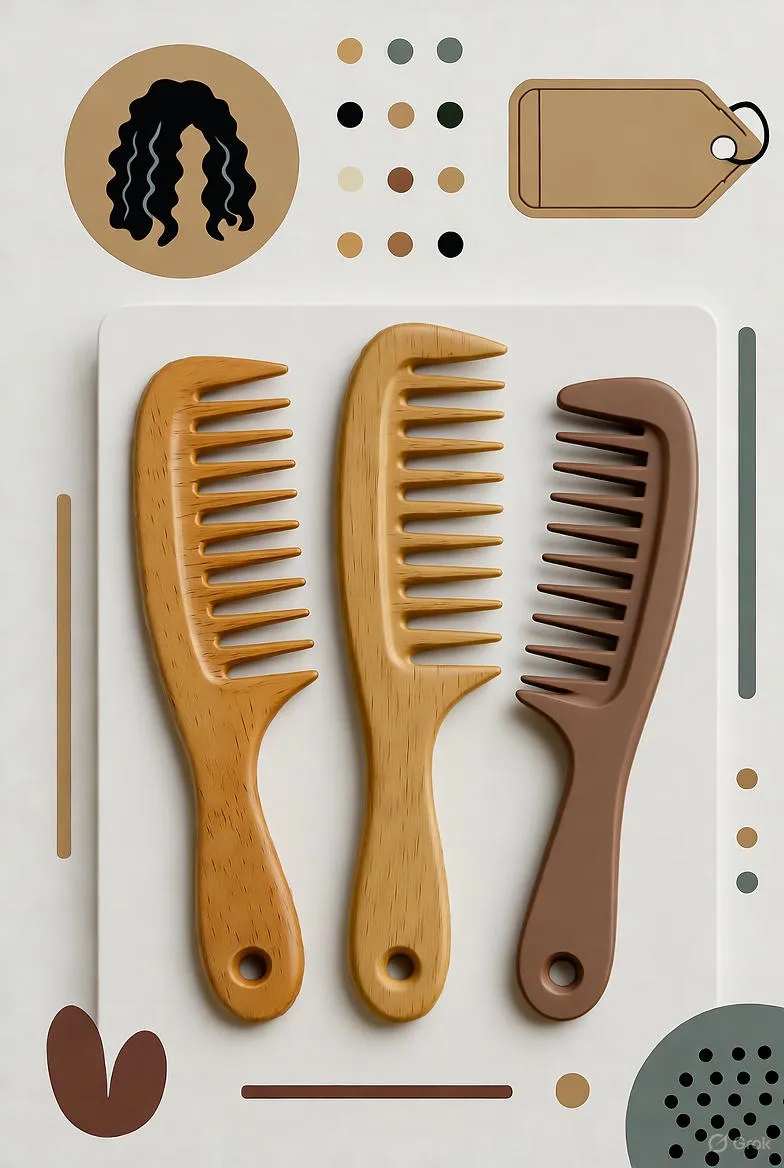How to Prevent Frizz and Keep Your Curly Hair Smooth and Defined
Discover expert tips to avoid frizz in curly hair. Learn how to keep your curls hydrated, defined, and smooth using natural methods and proper care techniques.

Curly hair can be a beautiful and unique feature, but managing it can sometimes feel like an endless struggle—especially when it comes to dealing with frizz. Whether your curls are loose waves or tight coils, keeping them smooth and defined requires the right balance of moisture, care, and technique. In this comprehensive guide, we’ll explore the causes of frizz and practical ways to avoid it, so your curls can always look their best.
Understanding What Causes Frizz
Frizz happens when the cuticle layer of the hair lifts, allowing moisture from the environment to enter the hair shaft. This leads to swelling, dryness, and a rough texture. Curly hair is more prone to frizz because its natural structure makes it harder for scalp oils to travel down the hair shaft, leaving it more vulnerable to dryness and environmental stressors.
Common Triggers of Frizz
- Humidity: Moist air causes the hair shaft to expand, leading to puffiness and flyaways.
- Heat Damage: Excessive use of straighteners, blow dryers, or curling irons can weaken the hair cuticle.
- Incorrect Products: Sulfates, alcohol, and silicones can strip or coat the hair, causing buildup and dryness.
- Lack of Moisture: When curly hair is dehydrated, it seeks moisture from the air, which increases frizz.
- Rough Handling: Brushing dry curls or using rough towels can disrupt the curl pattern and raise the cuticle layer.
Essential Tips to Avoid Frizz in Curly Hair
Frizz control begins with understanding your hair type and establishing a routine that nourishes and protects your curls. Here are some proven tips to help you maintain frizz-free, defined curls all year round.
1. Start with a Gentle Cleansing Routine
Use a sulfate-free shampoo or a co-wash (conditioner wash) to cleanse your hair without stripping its natural oils. Sulfates can make curly hair dry and brittle, so replacing them with mild cleansers helps maintain hydration and reduces frizz.
2. Always Condition Deeply
Deep conditioning is the key to moisture balance. Look for products rich in ingredients like argan oil, shea butter, coconut oil, and aloe vera. Use a deep conditioner once or twice a week to restore softness and elasticity. You can also apply heat (such as a warm towel) during treatment to help the product penetrate more deeply.
3. Detangle with Care
Detangle your curls when they’re wet and coated with conditioner. Use your fingers or a wide-tooth comb, starting from the ends and working your way up. Avoid brushing dry hair, as this disrupts curl formation and increases frizz dramatically.
4. Dry Your Hair the Right Way
Traditional towels can cause friction and roughen the cuticle, leading to frizz. Instead, use a microfiber towel or a soft cotton T-shirt to gently squeeze out excess water. Avoid rubbing your hair. Air drying is ideal, but if you must use a blow dryer, attach a diffuser and use it on a low-heat, low-speed setting to protect your curls’ shape.
5. Apply Leave-In Conditioners and Anti-Frizz Products
After washing, apply a leave-in conditioner or a curl cream designed for your hair type. Follow with an anti-frizz serum or light oil, focusing on the ends. These products help seal in moisture and smooth the hair cuticle, creating a protective barrier against humidity.
6. Use the LOC or LCO Method
The LOC (Leave-in, Oil, Cream) and LCO (Leave-in, Cream, Oil) methods are effective layering techniques to lock in moisture. Experiment with both to find which one works best for your hair’s porosity. High-porosity hair tends to benefit from heavier oils and butters, while low-porosity hair prefers lighter formulations.
7. Protect Your Hair While Sleeping
Your pillowcase could be sabotaging your curls. Cotton absorbs moisture and causes friction. Switch to a silk or satin pillowcase or wear a satin bonnet or scarf while sleeping. This simple change can make a noticeable difference in how your hair looks the next morning.
8. Avoid Over-Manipulation
Frequent touching, styling, or brushing can disrupt the curl pattern and cause frizz. Let your curls dry naturally and avoid restyling them too often. Instead, refresh them in the morning with a spray bottle of water mixed with a bit of leave-in conditioner.
Natural Remedies for Frizz Control
Mother Nature offers many solutions for frizz-prone curls. Here are some natural remedies you can incorporate into your routine:
- Apple Cider Vinegar Rinse: Helps balance pH levels and smooth the hair cuticle.
- Aloe Vera Gel: Moisturizes hair and adds definition without greasiness.
- Coconut or Argan Oil: Seals moisture, adds shine, and prevents dryness.
- Honey Masks: Acts as a natural humectant, drawing moisture into the hair.
Seasonal Adjustments for Frizz-Free Hair
Frizz management is not one-size-fits-all—it can depend heavily on the weather. During humid months, lightweight anti-humidity sprays and serums can help. In winter, focus on heavier creams and oils to protect against dryness caused by indoor heating. Adjusting your routine to match the climate keeps your curls consistently manageable.
Building a Sustainable Hair Care Routine
The best defense against frizz is consistency. Establish a weekly routine that includes cleansing, conditioning, moisturizing, and protective styling. Avoid harsh chemicals, frequent coloring, and high heat tools. Over time, your hair will become stronger, shinier, and more resilient to frizz-inducing factors.
Final Thoughts
Frizz doesn’t have to be your curly hair’s enemy. By combining proper hydration, gentle handling, and smart product choices, you can keep your curls defined and full of life. The secret lies in understanding your hair’s unique needs and treating it with patience and care. With a consistent routine and a little love, you’ll find that managing frizz becomes second nature—and your curls will reward you with their natural, radiant beauty.


